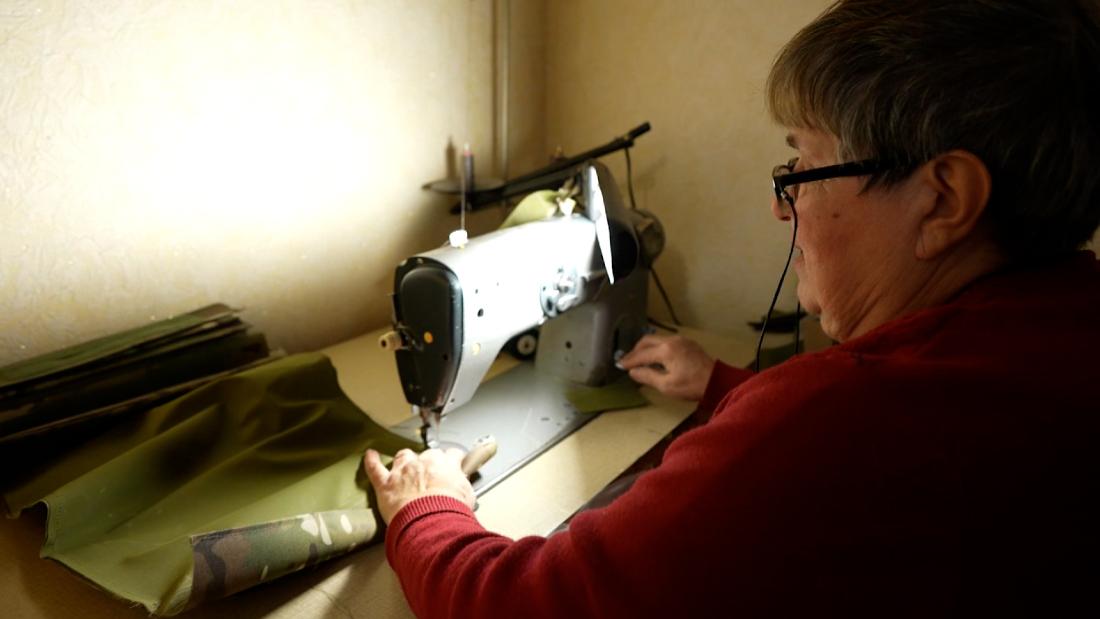Irina Protchenko, 68, sings the Ukrainian anthem while constantly working on her sewing machine in a small apartment in central Ukraine. She recently retired from a factory on the outskirts of Kyiv, where she spent 50 years making men’s suits and coats for garment giants like Hugo Boss and Lacoste.
You should be enjoying a life of leisure after decades of hard work. Instead, she is sewing bulletproof vests and balaclavas with her children and grandchildren for Ukrainians traveling east to protect their country from Russian invasion.
“I should be sewing wedding tuxedos,” not bulletproof vests, he told GLM. His sewing machine is propped against the corner of the living room, surrounded by bolts of fabric, Velcro and self-cut mats, supplies that were purchased by the family or donated.
“The biggest reward will be if one of these bulletproof vests saves the life of one of our defenders,” said Protchenko, proudly holding up a finished vest. Each completed vest counts as one more victory for Ukraine.
If he works nonstop, he can make up to 10 bulletproof vests a day. In the kitchen, Irina’s son-in-law, Evgeny, is sitting at his own machine, sewing blue and yellow bracelets that Ukrainian security forces use to identify themselves. He makes up to 200 bands a day.
This family workshop is part of a makeshift production chain of lfarger and the brainchild of Vitaly Golovenko. Before the war, he was a lawyer and amateur actor who played scenes from the First World War, when Ukrainian citizens fought against the Russian Bolsheviks.
Several days into this modern war, Golovenko said, he asked his mother-in-law, Irina, to help him sew bulletproof vests when his son’s godfather couldn’t find a bulletproof vest before heading to the front. Neither of them had an actual bulletproof vest to base their design on, so they used videos and images from the internet to create the shape.
Irina Protchenko sews material for bulletproof vests in a corner of her living room in central Ukraine.
The entire operation is based on donations, which have come in the form of cloth, thread and some monetary donations from as far away as Saudi Arabia and Ireland. Everyone who works on the project is a volunteer.
The armor plates that go inside the bulletproof vests come from old car scrap salvaged by local mechanic Oleg Metla and then welded together by engineer Valery Olretsky.
Golovenko took the test plates to the firing range. The first plate they tested was only 6 millimeters thick.
“You can see that these bullets did not penetrate,” he said. “But (a) sniper bullet and a machine gun bullet penetrated, so we decided on a thicker option,” Metla said.
The entire operation is run by volunteers using donated supplies.
They opted for 8 millimeter thick plates. Not too heavy, but capable of protecting against a variety of Russian ammunition.
Olretsky, 58, received a summons the night before to deploy. He hasn’t fired a gun in 20 years and his first grandchild is due in two weeks.
“What else can I do? If there’s a war, then I have to defend myself. It’s scary for everyone, but you still have to do it,” she said, her eyes brimming with tears.
He spent the last few weeks welding the old metal together in the hope of saving the life of a Ukrainian soldier against Russian weapons. Little did he know that one of the vests he helped make could be used to save his own life.

